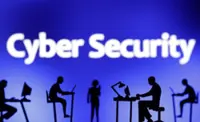While hybrid working arrangements have been a boon for many, it has also made them a big target for both hackers and phishing scammers. — 123rf.com
Due to the prolonged Covid-19 pandemic, industries in Malaysia made the shift to working remotely in order to cope with the mandated movement restrictions and lockdowns.
As the country transitions to the endemic phase, the survey “Implementation of Work From Home And Work From Office Practices In Response To Covid-19 Pandemic” by the Malaysian Employers Federation (MEF) found that 61.7% of companies planned to continue with hybrid work arrangements.
Already a subscriber? Log in
Save 30% OFF The Star Digital Access
Cancel anytime. Ad-free. Unlimited access with perks.





